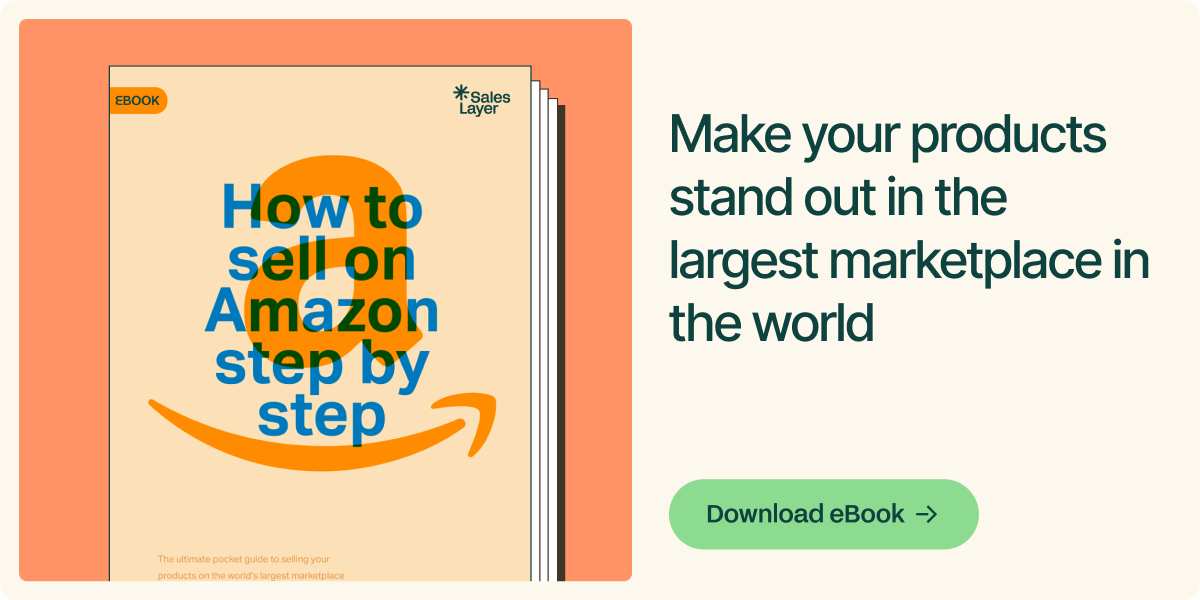
One might say that there are as many types of marketplaces as retailers, but just an elite of marketplaces truly matters and have some things in common that you can check to boost your marketplace sales.
Marketplaces for products, for services, SAAS, community-driven, managed by third parties... Even some rebel marketplaces that defend a platform model with no intermediaries and open code programming.
The number and type of marketplaces that you choose for your products doesn’t matter — if you add some of these platforms with a marketing strategy for online marketplace, your omnichannel strategy will be stronger and your brand will have a more professional image.
- All you need to add a marketplace like Amazon to a multichannel strategy -
In case you don’t know them yet, we tell you all the advantages of a marketing strategy for online marketplaces:
- They provide confidence: If your brand is new, it’s not very well known out there or has just taken its first e-commerce steps, your presence in a popular marketplace gives you value and credibility in the eye of the customer.
- It's easier to find you: Both in search engines like Google and thanks to shared product images in Pinterest, Facebook, Instagram... This way you can also improve the SEO of your products and add a new way of traffic generation.
- They open new markets: If you pretend to sell your products in new markets and countries just using your own website or app, the process will be much more expensive and slow. Also, thanks to marketplaces you can sell stocks that are stuck in your catalog from long ago.
- They are easy to manage: Catalog management in a marketplace is very easy thanks to the fixed fees, monthly or calculated by listing or transaction. But your own content management will be very effective with new multichannel digital technology tools, such as DAM (Digital Asset Management) and PIM (Product Information Management). This type of tools for e-commerce share rigorous and updated content to any marketplace, in an automatic and immediate manner.
- You can monitor the competition: Unlike a website or an app, you’re not alone in a marketplace. All your competitors share the same platform and you can study their behavior and what marketplace marketing strategies they apply, like price adjustments.
- Make your customer base: Increase your brand's visibility among new clients. According to a bloomreach survey, retailers that use a marketplace multiply their sales up to 50%, and 55% of customers start their product searches on Amazon.
- How to start selling your products on Amazon: The complete guide -
It’s true that most marketplaces don’t have a very attractive customer experience, their product pages aren’t very customized, there’s a lot of competition and it’s difficult to build your marketplace reputation from scratch. But marketplaces are not impossible! With great goals come great efforts… and our help! Use these tips to start now your marketing strategy for online marketplaces:
Few and select products
It’s not advisable to share all your catalog in a marketplace. Try to avoid your best seller products, because they would attract all the traffic, the marketplace will steal visits from your own website, and you won’t be able to diversify your sales. Promote less known products or the ones that have very few sales instead. A good strategy is to advertise secondary products as complement to your most popular products and study new customers needs.
Quality Content
Yes, the design in a lot of product pages is very ugly, but that doesn’t mean that you can neglect product information. Take care of your product content, because the favorite marketplace choices are those that give accurate and valuable information to users. Write new product descriptions to avoid duplicated content that could harm your SEO. Be creative and unique, provide all the product information that your competitors overlook, add complete and attractive titles, and use attributes, keywords and precise labels.
More and better reviews
The best marketplace marketing strategy is getting user ratings (and if they are good ones, the better). The marketplace will reward you for being popular and for provide a good service to your customers. Send reminders to your clients asking them to write a review in the marketplace, but avoid sponsored reviews, since it’s a practice forbidden in many marketplaces.
Social media
Try to attract traffic to a marketplace from other platforms, especially Facebook and Twitter. Some marketers recommend doing viral content, but who really knows the effective viral formula? Trying to do so is good, but concentrate your efforts on doing a content marketing strategy based on optimizing your listings for search engines and Google, Facebook or Instagram ads campaigns, depending on your audience’s interests.
Tailored marketplace
Remember that each marketplace is different and concentrates different types of clients. You will have to adapt your marketplace marketing strategy to each platform and avoid copying your competitors, because their ideas may not work for you. Some marketplaces also provide guidelines and handbooks that can help you at the start.
New and old customers
Did you know that getting a new client is five times more complicated than keeping an old one? Invite your previous customer base to visit your products in the marketplace and to leave a review. Growing from your usual clientele is a more gradual but safer strategy. You can offer discounts, promotions or coupons through social media and collect data from new customers.
- How to be a Pro and sell on Amazon FBA -
One, two or ten marketplaces? Your ambition is the limit! The most important thing to increase marketplace sales is to keep your product content management under control. Sales Layer is the PIM system with ready-to-use e-commerce marketplace connectors and the easiest software to keep in order and updated all your sales channels.
Are you going to disappear in the crowd or will you stand out? Try our 30-day free demo… and you will have the answer!







